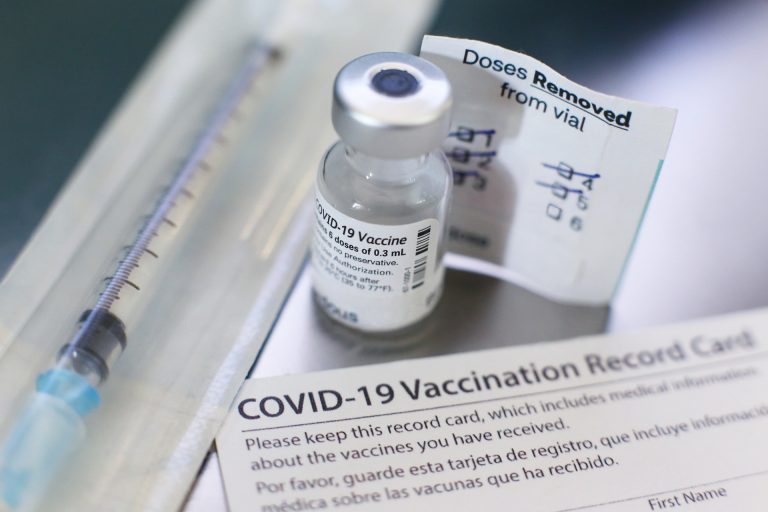The World Health Organization (WHO) recently classified the B.1.621 strain of Coronavirus Disease 2019 (COVID-19), also known as Mu, as a Variant of Interest (VOI). The variant, first identified in Colombia in Jan. 2021, is said to have a constellation of mutations that indicate its potential to escape immunity provided by COVID-19 vaccines or previous infections.
“Preliminary data presented to the Virus Evolution Working Group show a reduction in neutralization capacity of convalescent and vaccine sera similar to that seen for the Beta variant, but this needs to be confirmed by further studies,” the WHO’s weekly epidemiological update report stated.
Most outbreaks of Mu infections have been sporadic. However, larger outbreaks have been reported by countries in Europe and South America. In total, 4,500 sequences of the Mu variant have been uploaded by 39 nations to GISAID, a global science initiative that provides open access to genomic data of viruses.
Globally, the prevalence of Mu variants in sequenced cases has declined and is currently below 0.1 percent. However, the Mu strain’s prevalence in Colombia and Ecuador has “consistently increased,” accounting for 39 and 13 percent of cases, respectively.
The WHO warned that the reported prevalence must be interpreted after taking into account sequencing capabilities and timeliness of sharing sequences, which can vary greatly between countries. The agency stated that they will be monitoring for changes in the epidemiology of the Mu variant in South America, “particularly with the co-circulation of the Delta variant.”
Success
You are now signed up for our newsletter
Success
Check your email to complete sign up
Mu is the fifth variant to be classified as a VOI by the WHO. The four variants making up the more serious Variants of Concern (VOC) list are Delta, Beta, Alpha, and Gamma.
In an interview with Shape, Dr. Vivek Cherian, M.D., an internal medicine physician affiliated with the University of Maryland Medical System, said that it was too early to worry about Mu. However, he admitted that the virus does have the ability to bypass a host’s immunity.
Even monoclonal antibody treatments used in mild-to-moderate COVID-19 infections might be less effective against the Mu strain. Cherian added that given how fast the Delta variant rose worldwide, there is a chance that Mu might also soon be upgraded to VOC status by the WHO.
“A virus’s ability to become dominant ultimately depends on two primary factors: how transmissible/contagious the strain is and how effective it is at causing severe disease and or death… Virus mutations are constantly occurring, and ultimately any mutation(s) that cause a particular strain to be more contagious or more lethal (or worse, both), are more likely going to have a higher chance of becoming dominant,” Cherian said.
One of Mu’s mutations, P681H, is potentially responsible for increased transmission of the virus. Two other mutations, K417N and E484K are associated with helping evade antibodies against coronaviruses. Mu has two other mutations, Y144T and R346K, with unclear effects.
In an interview with The Washington Post, Paul Cardenas, a professor of infectious diseases and genomics at Universidad San Francisco de Quito in Ecuador, said that Mu is likely “more transmissible” than the original coronavirus strain. In most parts of Colombia and Ecuador, Mu has succeeded in outcompeting gamma and alpha variants of COVID-19.
Mu variants have recently been reported in the United States. In Los Angeles County, 167 Mu infections have been identified. In Illinois, 18 cases have been reported. State officials said that the consequence of Mu’s appearance remains unclear and that the Centers for Disease Control and Prevention (CDC) is yet to list the strain as a VOC.
The Delta variant, which was first detected in Illinois in mid-June, now accounts for almost all new infections. In late July, a news station in the state of Florida reported that Mu accounted for 10 percent of samples sequenced at the University of Miami. In total, around 2,000 Mu cases have been reported in the United States.
In early August, seven fully vaccinated people living in a nursing home in Belgium died due to the outbreak of Mu. In the UK, 45 Mu variant cases have been identified.
The concerns regarding the Mu variant come at a time when another new variant, C.1.2, which was first detected in South Africa, is also making headlines. According to a paper published on medRxiv, the strain has been detected “across the majority of the provinces in South Africa and in seven other countries spanning Africa, Europe, Asia and Oceania.” The National Institute for Communicable Diseases in South Africa recently issued an alert regarding the variant.
“It contains quite a few key mutations that we see in other variants that have gone on to become variants of interest or concern… Any time we see those particular mutations come up, we’d like to keep an eye on the variant to see what it’s going to do. These mutations may affect things like whether it evades the immune response, or transmits faster,” Dr. Megan Steain, a virologist and lecturer in immunology and infectious diseases with the University of Sydney’s Central Clinical School, said to The Guardian.














